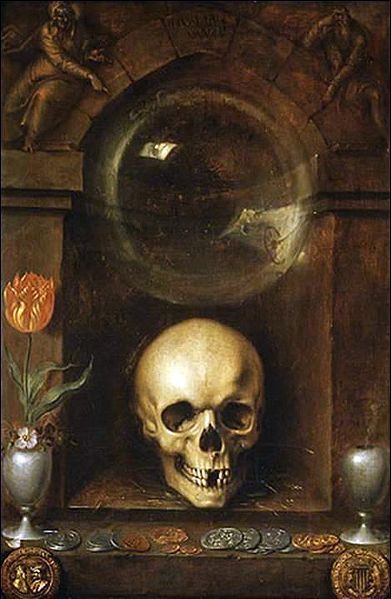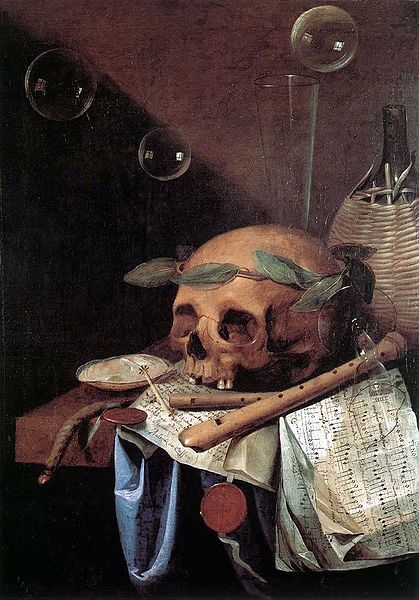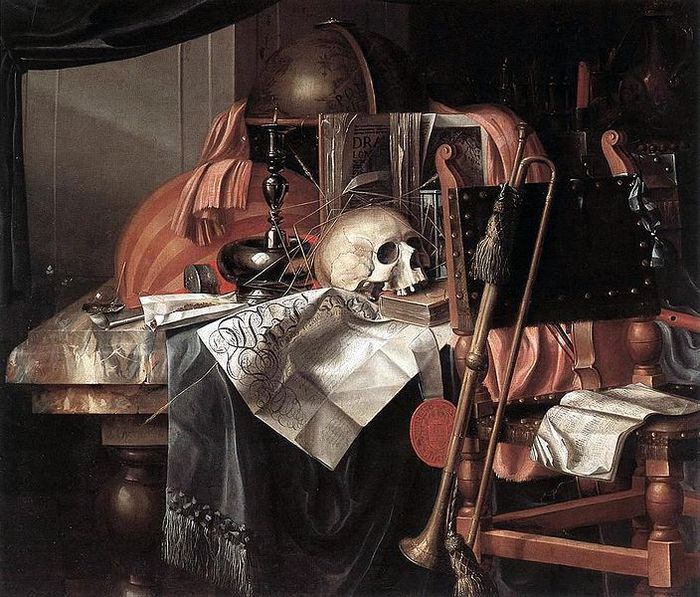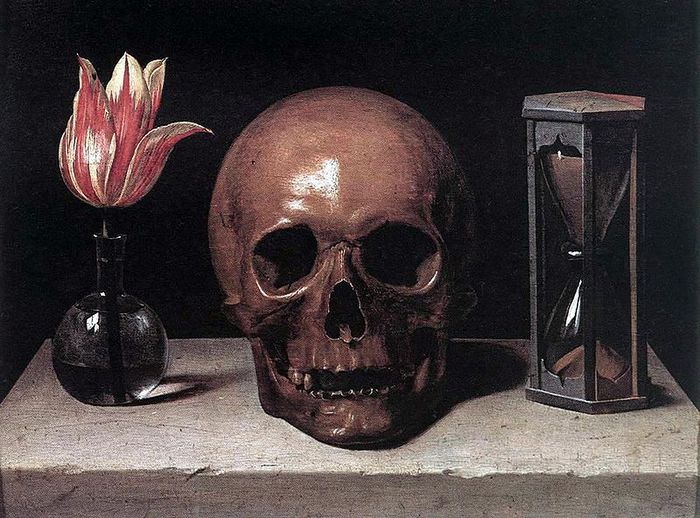
Jacob de Gheyn

Simon Renard de Saint-Andre

Barthel (Bartholomaus) Bruyn

Franciscus Gysbrechts

Pieter Boel

Philippe de Champaigne
Ванитас - Vanitas - «суета, тщеславие» — жанр живописи эпохи барокко, аллегорический натюрморт, композиционным центром которого традиционно является человеческий череп. Подобные картины, ранняя стадия развития натюрморта, предназначались для напоминания о быстротечности жизни, тщетности удовольствий и неизбежности смерти. Наибольшее распространение получил во Фландрии и Нидерландах в XVI и XVII веках, отдельные примеры жанра встречаются во Франции и Испании.
In the arts, Vanitas is a type of symbolic work of art especially associated with Northern European still life painting in Flanders and the Netherlands in the 16th and 17th centuries, though also common in other places and periods. The word is Latin, meaning "emptiness" and loosely translated corresponds to the meaninglessness of earthly life and the transient nature of vanity. Ecclesiastes 1:2 from the Bible is often quoted in conjunction with this term.

Комментариев нет:
Отправить комментарий